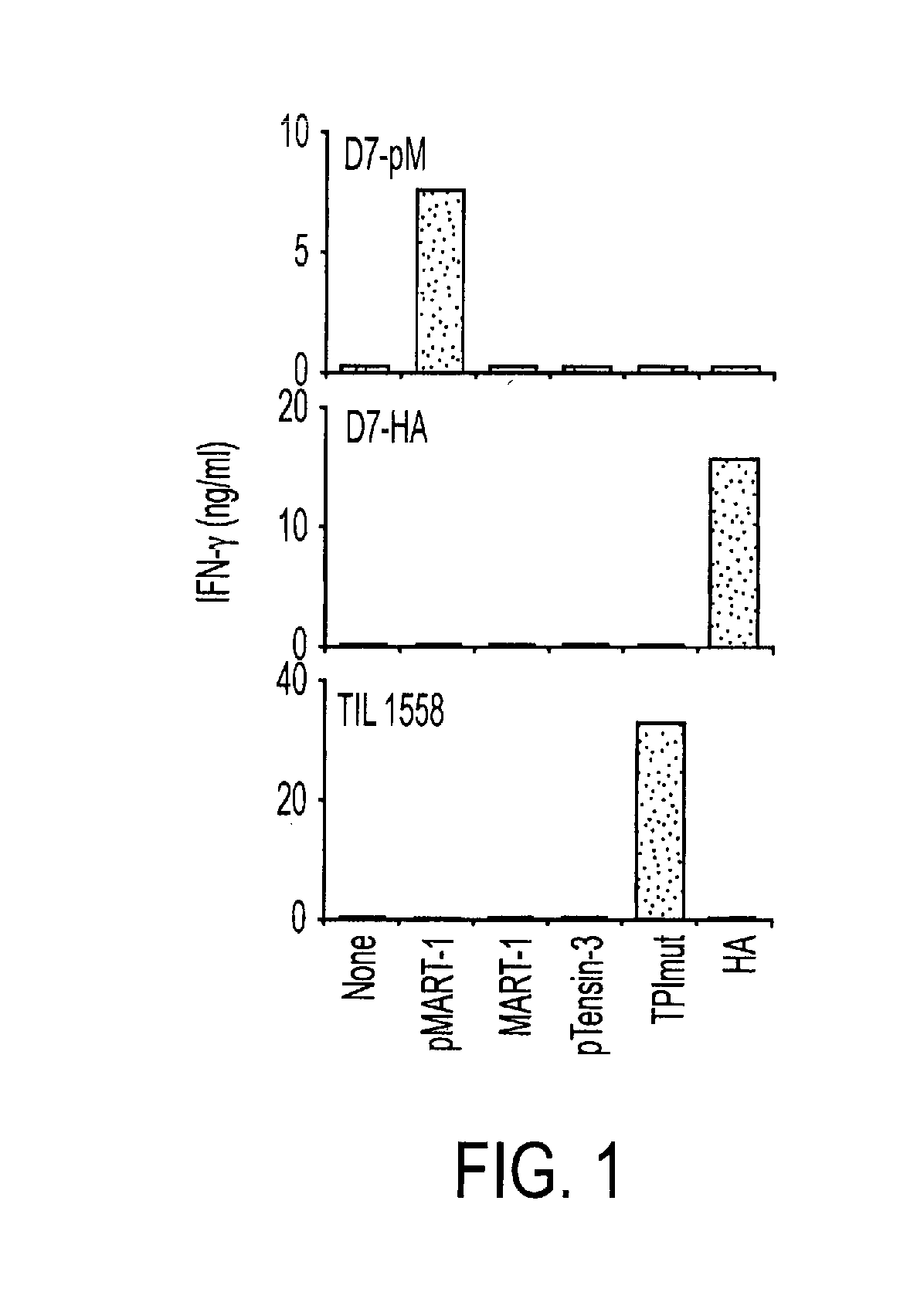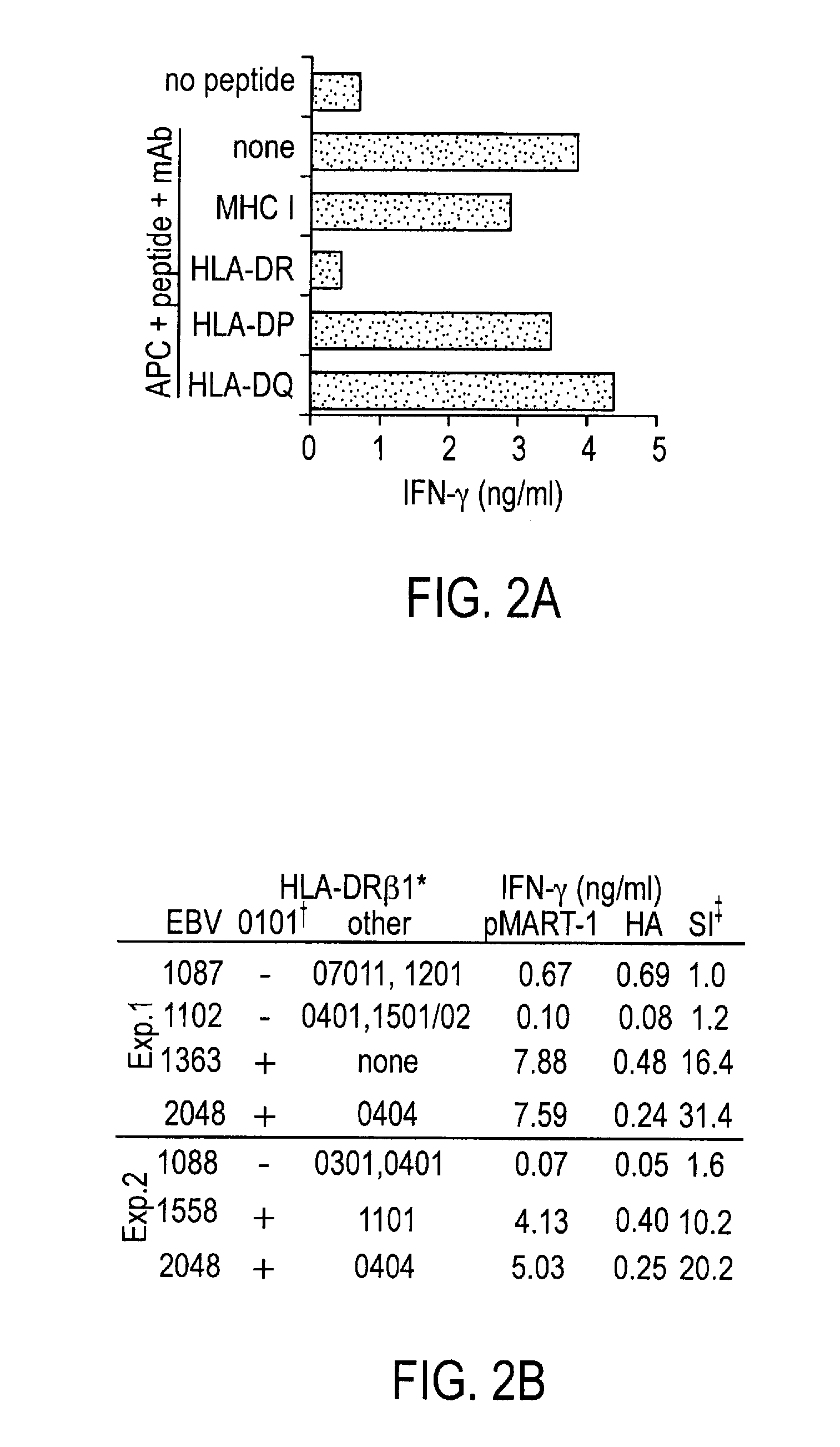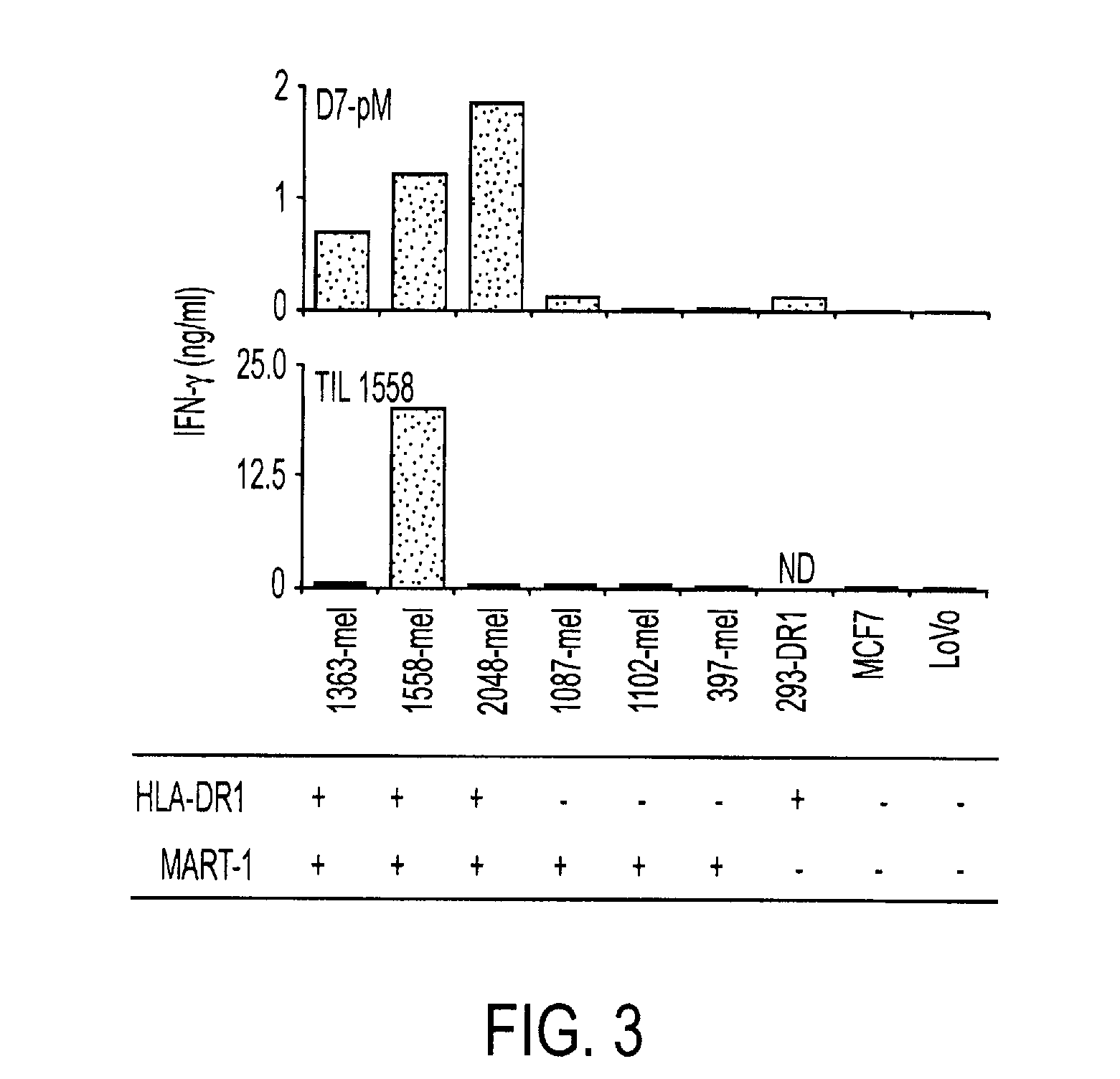Phosphopeptides as melanoma vaccines
a technology of phosphopeptides and melanoma, applied in the field of cancer immunotherapy and immunodiagnostics, can solve problems such as limited clinical success, and achieve the effect of reducing the risk of primary cancer
- Summary
- Abstract
- Description
- Claims
- Application Information
AI Technical Summary
Benefits of technology
Problems solved by technology
Method used
Image
Examples
example 1
T Cell Recognition of the Candidate Phosphopeptide B-Raf mutpT599
[0034]To assess the potential for human CD4+ T cells to specifically discriminate phosphoresidues, we first explored the candidate mutant melanoma antigen B-RafV600E (B-Raf mut) shared by 60% of melanomas (20). The somatic V600E mutation constitutively activates the B-Raf serine-threonine kinase and hence the MAPK cascade, presumably by mimicking a phosphorylation event. V600E is juxtaposed to the known dominant phosphosite T599. We previously reported that in vitro stimulation of melanoma patient peripheral blood mononuclear cells (PBMC) with a non-phosphorylated 29-mer candidate B-Raf mut peptide generated B-Raf mut-specific HLA-DRβ1*0404-restricted CD4+ T cells that did not cross-react with the wild type peptide (B-Raf wt) and that specifically recognized HLA compatible melanoma cells expressing B-Raf mut(21). To investigate the fine specificity of MHC II-restricted CD4+ T cells for phosphate moieties, T cells rais...
example 2
Identification and Characterization of HLA-DR-Associated Phosphopeptides
[0035]To identify naturally processed tumor-associated MHC II-restricted phosphopeptides as potential targets for immune recognition, we affinity isolated HLA-DR-peptide complexes from 2 cultured melanoma lines (1363-mel and 2048-mel) and their autologous EBV-B cell counterparts (1363-EBV and 2048-EBV). These cell lines were selected because they constitutively express significant levels of common HLA-DR molecules, as assessed with flow cytometric analysis using the pan-DR mAb L243 and HLA allele-specific mAbs (not shown). By HLA genotyping, 2048-mel and 2048-EBV contain HLA-DRβ1*0101, which is found in 31% of melanoma patients (23); DRβ1*0404, found in 6.5% of patients (23); and DRβ4*0103. Notably, 1363-mel and -EBV contain a single DR molecule, HLA-DR DRβ1*0101, affording an opportunity to isolate phosphopeptides with unambiguous HLA allele restriction. Patients 2048 and 1363 share HLA-DR DRβ1*0101, enabling t...
example 3
Specific CD4+ T Cell Recognition of Phospho-MART-1
[0040]To assess the ability of human CD4+ T cells to specifically recognize tumor-associated phosphopeptides, we selected the MART-1100-111 phosphopeptide (pMART-1, containing pS108) for further study. As shown in FIG. 4, a nested set of phosphopeptides derived from the C-terminus of MART-1 was eluted from both 1363- and 2048-mel which share HLA-DR DRβ1*0101, but not from the autologous EBV-B cell lines. Because of its selective expression pattern in cells of the melanocytic lineage, including normal melanocytes and melanoma cells, MART-1 (also termed Melan-A) is an important target of immunotherapeutic approaches for the treatment of melanoma including vaccines and adoptive T cell transfer (31, 32) This transmembrane protein, which is localized to melanosomes and functions to regulate mammalian pigmentation (33), was not known to be phosphorylated prior to the current report. However, several non-phosphorylated MHC class I- and II-r...
PUM
| Property | Measurement | Unit |
|---|---|---|
| Density | aaaaa | aaaaa |
| Density | aaaaa | aaaaa |
| Density | aaaaa | aaaaa |
Abstract
Description
Claims
Application Information
 Login to View More
Login to View More - R&D
- Intellectual Property
- Life Sciences
- Materials
- Tech Scout
- Unparalleled Data Quality
- Higher Quality Content
- 60% Fewer Hallucinations
Browse by: Latest US Patents, China's latest patents, Technical Efficacy Thesaurus, Application Domain, Technology Topic, Popular Technical Reports.
© 2025 PatSnap. All rights reserved.Legal|Privacy policy|Modern Slavery Act Transparency Statement|Sitemap|About US| Contact US: help@patsnap.com



